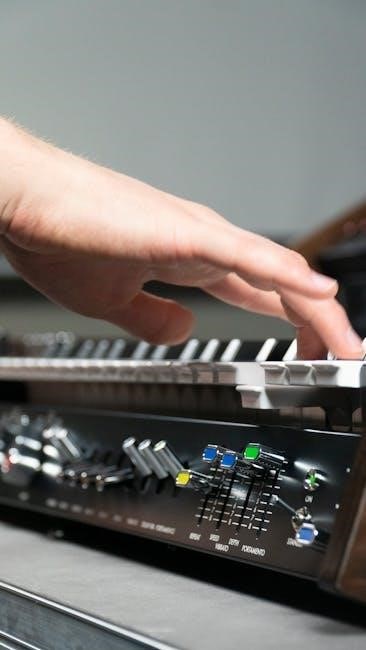
sequential gearbox manual
A sequential gearbox manual is a non-synchronous manual transmission that allows drivers to shift gears in a specific sequence, offering smooth, precise control and preventing gear grinding․
What is a Sequential Gearbox Manual?
A sequential gearbox manual, or sequential manual transmission, is a type of non-synchronous manual gearbox that requires shifting gears in a specific order․ Unlike traditional manual transmissions, it eliminates the need to stop or slow down when changing gears․ This system is designed for high-performance vehicles, offering faster and smoother shifting․ The sequential gearbox manual prevents gear grinding or jumping, making it ideal for racing or sports cars․ It operates with a fixed sequence of gears, allowing drivers to upshift or downshift seamlessly․ This gearbox is known for its precision and speed, providing better control over engine rpm and vehicle speed․ It is often preferred in high-performance driving due to its ability to maintain optimal power delivery․ The sequential gearbox manual is a popular choice for drivers seeking enhanced driving dynamics and responsiveness․
Purpose and Functionality
The purpose of a sequential gearbox manual is to provide precise and efficient gear shifting, enhancing driver control and performance․ Its functionality revolves around allowing seamless upshifting and downshifting without the need to stop or slow down․ This gearbox is designed to maintain optimal engine speed, ensuring smooth power delivery․ The sequential mechanism prevents gear grinding, reducing wear on components and improving durability․ It is particularly beneficial in high-performance vehicles, where quick and accurate gear changes are critical․ The functionality also includes features that prevent mis-shifting, ensuring gears engage smoothly; This makes it ideal for competitive racing and sports driving, where milliseconds count․ The sequential gearbox manual combines the benefits of manual control with advanced mechanical simplicity, offering a driving experience that balances precision and ease of use․ Its design focuses on maximizing performance while minimizing driver input, making it a preferred choice for enthusiasts and professionals alike․

Components of a Sequential Gearbox
A sequential gearbox comprises gears, shafts, shifters, and linkages, designed for precise control․ Its tightly spaced gears and mechanical linkages enable smooth, quick shifting, ensuring optimal performance and durability․
Gear Ratios and Layout
The sequential gearbox features a fixed set of gear ratios, carefully designed to optimize performance and acceleration․ These ratios are typically closer together than those in traditional manual gearboxes, allowing for smoother transitions between gears․ The layout of the gears is often linear, with each gear directly engaging the next in sequence․ This design eliminates the need for a traditional “H-pattern” shifting, simplifying the shifting process and reducing the likelihood of misshifts․ The gear ratios are selected based on the vehicle’s intended use, whether for racing, high-performance driving, or everyday commuting․ The sequential layout ensures that each gear is easily accessible, making it ideal for situations where quick and precise shifts are critical․ This configuration also enhances driver control, especially in high-stakes environments like motorsports․
Shifter Mechanism and Controls

The shifter mechanism in a sequential gearbox is designed for precise and efficient gear changes․ Unlike traditional manual gearboxes, which use an “H-pattern” gate, sequential shifters move in a straight line or rotational path․ This allows drivers to shift gears quickly and intuitively, as each gear is accessed sequentially․ The shifter is typically connected to a drum and selector mechanism inside the gearbox, which engages the desired gear based on the driver’s input․ Controls are straightforward, with a simple lever or paddle system that eliminates the need for complex coordination․ Many modern sequential gearboxes also incorporate electronic or hydraulic controls, enabling faster and more precise shifts․ These systems often include sensors and actuators to manage gear selection, reducing mechanical complexity and enhancing driver experience․ The result is a more streamlined and driver-focused shifting process, ideal for high-performance applications․
Clutch and Synchronization System
The clutch and synchronization system in a sequential gearbox plays a crucial role in ensuring smooth and precise gear transitions․ Unlike traditional manual gearboxes, sequential systems often use a more advanced clutch mechanism designed for rapid engagement and disengagement․ The clutch pedal works in conjunction with the synchronization system to temporarily disconnect power from the engine during shifts․ This synchronization system is typically more refined, featuring components like synchronizer rings and gear dogs to ensure gears mesh seamlessly․ The design minimizes wear and tear while allowing drivers to shift gears quickly and effortlessly․ In high-performance applications, the clutch and synchronization system is optimized for durability and responsiveness, making it ideal for racing or sport driving scenarios where rapid shifting is essential․ This system is a key factor in the sequential gearbox’s ability to deliver smooth, precise, and high-speed gear changes․ Proper maintenance of these components is vital for optimal performance․

How a Sequential Gearbox Works
A sequential gearbox operates by engaging gears in a fixed order, requiring the clutch to disengage power before each shift․ The synchronization system ensures smooth gear transitions, while the driver controls the precise timing of shifts for optimal performance․ This design allows for rapid and seamless gear changes, making it ideal for high-performance driving scenarios․ The system relies on the driver’s input to coordinate clutch engagement and accelerator control, ensuring efficient power delivery through the selected gear ratio․ This mechanism enables quick acceleration and maintains engine speed alignment during shifts, enhancing overall driving dynamics and responsiveness․ Proper synchronization and clutch operation are critical for smooth functionality․ The sequential gearbox is engineered for precision and speed, catering to demanding driving conditions․ The driver must master the timing of clutch and accelerator pedals to maximize performance and avoid gear damage․ This system ensures that power is delivered consistently, minimizing interruptions during gear transitions, which is essential for maintaining momentum in racing or high-speed environments․ The sequential design eliminates the need for stopping or slowing down between shifts, providing uninterrupted power delivery․ The gearbox’s internal mechanisms are designed to handle high torque and frequent shifting, making it durable and reliable for intensive use․ Regular maintenance, such as oil changes and filter replacements, is essential to maintain the gearbox’s performance and longevity․ The sequential gearbox’s advanced synchronization system reduces wear on gears and engagement components, ensuring a longer service life compared to traditional manual gearboxes․ The system’s precision engineering allows for faster shifting and better control over engine power, making it a preferred choice for professional drivers and enthusiasts alike․ The sequential gearbox’s ability to maintain optimal engine speed during shifts contributes to improved fuel efficiency and reduced strain on the vehicle’s engine․ This design also enhances driver comfort by minimizing the physical effort required for shifting, allowing for a more focused and enjoyable driving experience․ The sequential gearbox’s integration with modern vehicle technology, such as paddle shifters and advanced driver-assistance systems, further enhances its functionality and appeal․ The combination of speed, precision, and ease of use makes the sequential gearbox a superior choice for high-performance vehicles․ The system’s reliability and consistency ensure that drivers can perform at their best, whether on the race track or the open road․ The sequential gearbox’s innovative design and advanced components set it apart from traditional manual transmissions, offering a more refined and efficient shifting experience․ The ability to shift gears without interruption or loss of power is a key advantage, providing a seamless driving experience․ The sequential gearbox’s design prioritizes performance, durability, and driver convenience, making it a versatile and reliable choice for a wide range of driving applications․ The system’s advanced synchronization mechanism ensures that gears engage smoothly and quietly, reducing noise and vibrations during shifts․ The sequential gearbox’s compact design also allows for better weight distribution and improved handling, contributing to overall vehicle performance․ The system’s efficiency and effectiveness make it a popular choice for both professional racers and everyday drivers seeking a more engaging driving experience․ The sequential gearbox’s ability to adapt to various driving conditions and styles ensures that it delivers consistent and reliable performance in all situations․ The combination of precision engineering and user-friendly design makes the sequential gearbox a standout choice for modern vehicles․ The system’s focus on driver control and feedback enhances the overall driving experience, providing a more connected and responsive feel․ The sequential gearbox’s advanced features and capabilities make it a valuable asset for drivers who demand the best in performance and functionality․ The system’s continuous evolution and improvement ensure that it remains at the forefront of automotive technology, offering cutting-edge performance and reliability․ The sequential gearbox’s proven track record in high-performance applications has solidified its reputation as a dependable and high-quality transmission system․ The system’s ability to withstand the rigors of frequent shifting and high torque makes it a durable and long-lasting component․ The sequential gearbox’s integration with other vehicle systems ensures that it operates seamlessly, providing a cohesive and efficient driving experience․ The system’s focus on precision and control allows drivers to push their vehicles to the limit with confidence․ The sequential gearbox’s innovative design and advanced components have redefined the standards for manual transmissions, setting a new benchmark for performance and functionality․ The system’s ability to deliver rapid and smooth gear changes has made it a favorite among driving enthusiasts and professionals alike․ The sequential gearbox’s commitment to excellence and innovation ensures that it remains a top choice for drivers seeking the ultimate driving experience․ The system’s continuous development and refinement guarantee that it will continue to meet the evolving needs of drivers and vehicles․ The sequential gearbox’s legacy as a high-performance transmission is built on its reputation for reliability, precision, and driver satisfaction․ The system’s impact on the automotive industry is undeniable, as it has influenced the design and functionality of modern transmissions․ The sequential gearbox’s enduring popularity is a testament to its quality and effectiveness in delivering exceptional performance․ The system’s ability to balance speed, precision, and ease of use has made it a cornerstone of modern automotive engineering․ The sequential gearbox’s contribution to the world of motorsports and high-performance driving is immeasurable, as it has enabled drivers to achieve new levels of speed and control․ The system’s innovative approach to gear shifting has revolutionized the way drivers interact with their vehicles, providing a more engaging and responsive experience․ The sequential gearbox’s influence extends beyond racing, as its principles and technologies are applied in various automotive applications, enhancing overall performance and efficiency; The system’s enduring success is a result of its ability to adapt to changing demands and technological advancements, ensuring it remains relevant and effective․ The sequential gearbox’s place in automotive history is secure, as it has played a pivotal role in shaping the evolution of manual transmissions․ The system’s legacy continues to inspire innovation, as engineers strive to improve and expand its capabilities․ The sequential gearbox’s impact on driving culture is profound, as it has become synonymous with high-performance driving and precision engineering․ The system’s ability to deliver exceptional results has made it a beloved component among automotive enthusiasts and professionals․ The sequential gearbox’s story is one of continuous improvement and a relentless pursuit of excellence, ensuring it remains a vital part of the automotive landscape․ The system’s contributions to the industry are countless, and its influence will be felt for generations to come․ The sequential gearbox’s journey from inception to widespread adoption is a testament to human ingenuity and the quest for better performance․ The system’s evolution reflects the changing needs of drivers and the automotive industry, demonstrating its adaptability and resilience․ The sequential gearbox’s ability to meet these needs has cemented its position as a cornerstone of modern automotive technology․ The system’s future looks promising, as ongoing advancements promise even greater performance and efficiency․ The sequential gearbox’s continued development ensures that it will remain a key player in the world of high-performance driving․ The system’s potential for innovation is limitless, as engineers explore new materials, designs, and technologies to further enhance its capabilities․ The sequential gearbox’s role in shaping the future of automotive transmissions is undeniable, as it pushes the boundaries of what is possible․ The system’s impact on the industry will only continue to grow, as it inspires new generations of engineers and drivers alike․ The sequential gearbox’s enduring appeal lies in its ability to combine tradition with innovation, offering a unique and rewarding driving experience․ The system’s blend of heritage and cutting-edge technology ensures it remains relevant in an ever-changing automotive landscape․ The sequential gearbox’s commitment to excellence and performance has created a loyal following, as drivers and enthusiasts appreciate its unique qualities․ The system’s ability to connect with its users on a deeper level has made it more than just a transmission—it has become a symbol of automotive passion and excellence․ The sequential gearbox’s journey is far from over, as it continues to evolve and redefine the standards for manual transmissions․ The system’s future is bright, and its impact on the automotive world will only continue to grow․ The sequential gearbox’s legacy is built on a foundation of innovation, precision, and a relentless pursuit of perfection, ensuring its place in automotive history․ The system’s influence extends beyond the track, as it has become a cultural icon, symbolizing the spirit of performance and driving excellence․ The sequential gearbox’s enduring popularity is a testament to its quality and the emotional connection it fosters with drivers․ The system’s ability to deliver unparalleled performance and driving satisfaction has made it a timeless classic in the world of automotive engineering․ The sequential gearbox’s story is one of passion, innovation, and a commitment to excellence, ensuring its place in the hearts of driving enthusiasts for generations to come․
Shifting Mechanism and Sequence
The shifting mechanism in a sequential gearbox operates through a fixed sequence, requiring the driver to engage gears in a predetermined order․ Unlike traditional manual gearboxes, sequential gearboxes do not use an H-pattern shift layout․ Instead, the shifter moves linearly, selecting gears in a specific sequence․ This design simplifies the shifting process, as the driver only needs to move the shifter forward or backward to engage the next or previous gear․ The mechanism relies on a selector drum and forks to engage gears in sequence, ensuring smooth transitions․ The driver must press the clutch fully before shifting to disengage power and allow the next gear to engage․ This system prevents gear grinding and ensures precise control over the shifting process․ The sequential design enhances shifting speed and accuracy, making it ideal for high-performance applications where quick gear changes are critical․ The fixed sequence also reduces the risk of misshifting, as the gearbox only allows engagement of the next gear in the sequence․
Gear Engagement and Disengagement Process
The gear engagement and disengagement process in a sequential gearbox relies on a combination of mechanical components and synchronization․ When the driver presses the clutch, it disengages the engine from the current gear, allowing the gearbox to transition smoothly․ The shifter mechanism then selects the next gear in the sequence, and the synchronizer rings ensure the gear teeth align properly before engagement․ This synchronization minimizes wear and prevents gear grinding․ The selector fork, guided by the shift drum, moves to lock the desired gear into place․ Once engaged, the clutch is released, reconnecting the engine to the gearbox․ This process is repeated for each gear change, ensuring precise and efficient transitions․ The sequential design ensures that gears are only engaged in a specific order, reducing the risk of misalignment or damage․ This system is critical for maintaining smooth operation and longevity of the gearbox․
Role of the Clutch in Sequential Shifting
The clutch plays a pivotal role in sequential shifting by interrupting the power flow between the engine and gearbox․ When the driver presses the clutch pedal, it disengages the engine from the current gear, allowing the shifter to move freely through the gear sequence․ This interruption prevents gear grinding and ensures smooth transitions․ Unlike traditional manual gearboxes, the clutch in a sequential system is typically fully disengaged for each shift, requiring precise pedal control․ The clutch also works in harmony with the synchronization system to ensure gears align properly before re-engaging power․ Proper clutch technique is essential for maintaining the longevity of the gearbox and ensuring seamless shifting performance․ Improper use can lead to wear on the clutch and synchronization components, emphasizing the importance of mastering its operation in sequential shifting․
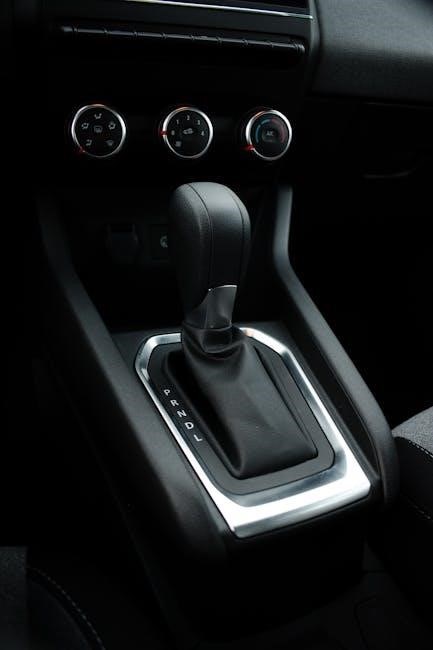
Key Features of a Sequential Gearbox
A sequential gearbox offers precision engineering, direct gear engagement, and enhanced driver control, making it ideal for high-performance applications․ Its design minimizes shifting errors and maximizes efficiency․
Speed and Precision in Gear Shifts
A sequential gearbox is renowned for its exceptional speed and precision during gear shifts․ This is achieved through a direct mechanical linkage system that eliminates the need for guessing gear positions․ The driver can move through the gears in a predetermined sequence, ensuring smooth and rapid transitions․ Unlike traditional manual gearboxes, sequential systems do not require the driver to pause or “feel” for the next gear, reducing shifting time significantly․ This precision is particularly advantageous in high-performance environments, such as racing, where milliseconds can make a substantial difference․ The design ensures that each gear engages cleanly and efficiently, minimizing the risk of misalignment or hesitation․ This level of control and responsiveness enhances overall driving performance, making it a preferred choice for drivers seeking optimal acceleration and agility․
No Need to Stop or Slow Down for Shifting
One of the standout advantages of a sequential gearbox is the ability to shift gears without needing to stop or slow down significantly․ This is particularly beneficial in high-performance or racing scenarios, where maintaining momentum is crucial․ The sequential design allows drivers to transition between gears in a smooth, uninterrupted manner, as the next gear is always directly aligned and ready to engage․ Unlike traditional manual gearboxes, which may require pausing in neutral to avoid gear grinding, sequential systems eliminate this necessity․ This feature not only enhances driving efficiency but also reduces wear on gearbox components․ The ability to shift seamlessly without slowing down ensures a more consistent and controlled driving experience, especially in competitive or dynamic environments where every second counts․
Prevention of Gear Grinding or Jumping
In a sequential gearbox, gear grinding or jumping is effectively prevented through its mechanical design and operation․ Unlike traditional manual transmissions, where improper alignment or synchronization can cause gears to grind, the sequential system ensures that each gear is pre-selected and directly aligned before engagement․ This eliminates the risk of gears clashing or jumping out of place․ The sequential mechanism guides the gearshift rod along a fixed path, ensuring smooth and precise engagement․ Additionally, the synchronization system is designed to match gear speeds before locking in, further reducing the likelihood of gear grinding․ This feature enhances reliability and reduces wear on gearbox components, providing a more durable and driver-friendly transmission system․ The prevention of gear grinding also minimizes the need for costly repairs and extends the lifespan of the gearbox․
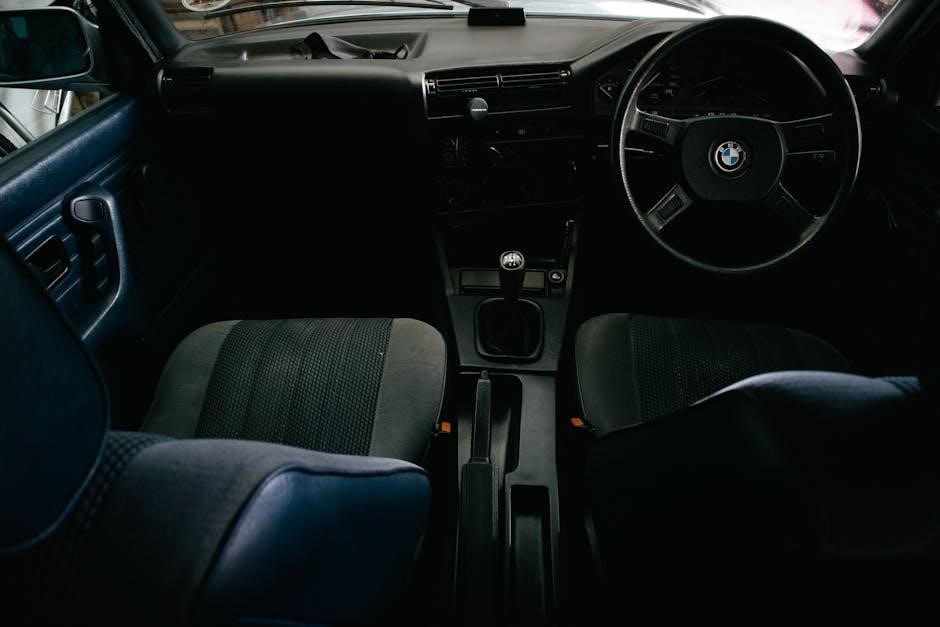
Comparison with Traditional Manual Gearbox
A sequential gearbox differs from a traditional manual gearbox by using a fixed gear sequence and direct gear engagement, eliminating the H-pattern shifting and reducing driver effort․
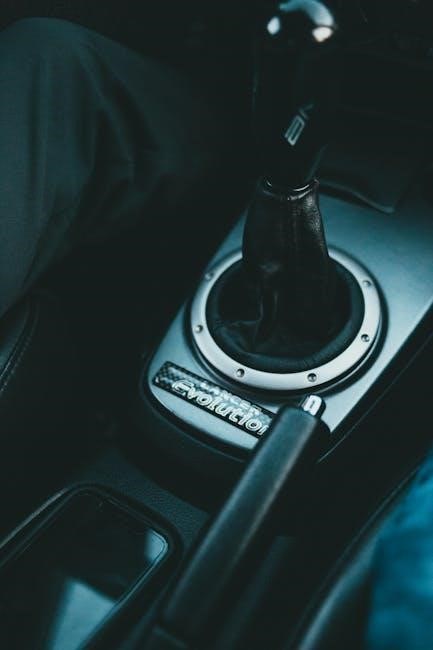
Differences in Shifting Mechanism
The sequential gearbox employs a distinct shifting mechanism compared to traditional manual gearboxes․ In a sequential system, gears are engaged in a fixed, sequential order, requiring the driver to move through each gear one at a time․ This eliminates the need for an H-pattern shifting layout, as the shifter moves linearly, either forward or backward, to select the next or previous gear․ Unlike traditional manuals, where gears can be selected non-sequentially, the sequential design ensures a more streamlined and efficient shifting process․ This mechanism reduces driver effort and minimizes the risk of misshifting, as the gearbox is designed to engage only the intended gear․ The sequential system is particularly advantageous in high-performance or racing applications, where rapid and precise gear changes are critical․ This contrasts with traditional manuals, which offer more flexibility but require greater driver input and coordination․
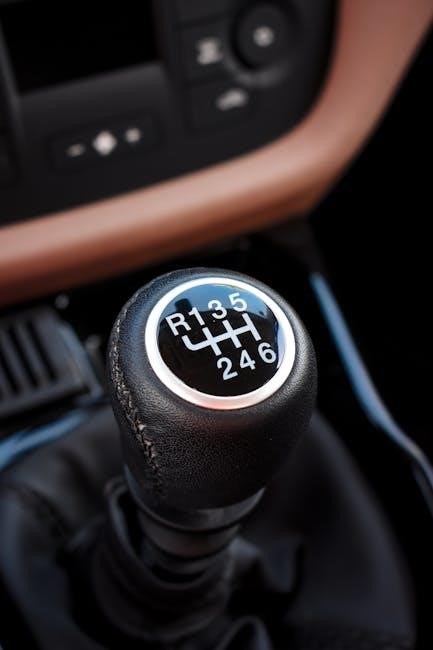
Advantages in High-Performance Vehicles
Sequential gearboxes offer significant advantages in high-performance vehicles, particularly in racing and competitive driving scenarios․ Their primary benefit is the ability to achieve faster and more precise gear shifts compared to traditional manual gearboxes․ The sequential design eliminates the need for an H-pattern shifting layout, allowing drivers to focus solely on acceleration and braking without the distraction of complex gear selection․ This simplifies the driving process and enables drivers to maintain better control and concentration during high-speed maneuvers․ Additionally, sequential gearboxes are often lighter and more compact, which improves the overall power-to-weight ratio of the vehicle—a crucial factor in maximizing acceleration and handling․ The mechanical simplicity of the sequential system also reduces the likelihood of mechanical failure under extreme conditions, making it a reliable choice for high-performance applications․ Furthermore, the quick and smooth engagement of gears ensures optimal power delivery, which is essential for maintaining speed and traction in competitive environments․ Overall, sequential gearboxes are well-suited for high-performance vehicles where every fraction of a second and every detail in handling matter․
Ease of Use and Driver Comfort
Sequential gearboxes are designed to enhance driver comfort and simplify the shifting process, making them more accessible for a wide range of drivers․ Unlike traditional manual gearboxes, sequential systems eliminate the need for complex gear selection patterns, as drivers only move the shifter forward or backward in a single plane․ This reduces the cognitive load and physical effort required during gear changes, allowing drivers to focus more on steering and braking․ Additionally, the sequential design often features a shorter shifter throw, which reduces the time and effort needed to shift gears․ This makes the driving experience smoother and less tiring, especially during long drives or in heavy traffic․ The simplicity of the system also reduces the likelihood of shifting errors, further enhancing driver confidence and overall comfort behind the wheel․

Maintenance and Care for Sequential Gearbox
Regular maintenance ensures optimal performance and longevity․ Check lubricant levels, inspect components for wear, and clean internal parts․ Follow manufacturer guidelines for service intervals to maintain smooth operation and durability․
Oil Change and Lubrication Requirements
Regular oil changes are essential for maintaining the health of a sequential gearbox․ Use the manufacturer-recommended lubricant to ensure compatibility and optimal performance․ Typically, synthetic oils are preferred due to their superior viscosity and temperature stability․ The oil should be changed every 30,000 to 60,000 miles, depending on driving conditions․ Always refer to the manual for specific intervals and guidelines․ Before draining the old oil, warm up the gearbox by driving for a few minutes to allow the oil to flow freely․ Locate the drain plug, usually found at the bottom of the gearbox, and collect the old oil in a pan․ Replace the filter if applicable and refill with the recommended amount of fresh lubricant․ Proper lubrication prevents friction, wear, and overheating, ensuring smooth gear shifts and extended gearbox life․ Avoid using inferior oils, as they may not provide adequate protection․ Regular checks and timely oil changes are critical for reliability and performance․
Cleaning and Replacing the Gearbox Filter
Cleaning or replacing the gearbox filter is a vital maintenance task for a sequential gearbox․ The filter prevents dirt, debris, and metal shavings from entering the system, which could damage gears and bearings․ Locate the filter, usually near the oil pan or integrated into the gearbox housing․ For reusable filters, clean them with compressed air or a mild solvent․ If the filter is damaged or clogged, replace it with an OEM or equivalent aftermarket part․ Ensure the new filter is properly sealed to maintain the system’s integrity․ Refer to the manual for specific instructions, as procedures may vary․ Regularly inspecting and maintaining the filter ensures optimal lubrication flow and prevents premature wear․ Always use the correct tools and follow safety precautions when working with gearbox components․ A clean filter guarantees smooth operation and extends the lifespan of the sequential gearbox․
Inspection of Shifter and Linkages
Inspecting the shifter and linkages is essential for ensuring smooth and precise gear shifts in a sequential gearbox․ Start by checking the shifter assembly for any signs of wear or looseness․ Ensure all bolts and connections are tightened to the manufacturer’s torque specifications․ Examine the linkages for damage, rust, or excessive play, as these can disrupt the shifting process․ Lubricate all moving parts with the recommended grease to maintain smooth operation․ If any components are worn or damaged, replace them promptly to avoid further issues․ Regular inspection helps prevent misalignment or binding, which can lead to gear engagement problems․ Always refer to the manual for specific inspection intervals and procedures․ Proper maintenance of the shifter and linkages ensures reliable performance and prolongs the lifespan of the sequential gearbox․

Driving Techniques for Sequential Gearbox
Master smooth acceleration by using the correct gear for speed and load․ Avoid aggressive shifts and excessive clutch use to prevent wear․ Monitor RPMs to stay in optimal range․
Mastering Upshifting and Downshifting
Mastering upshifting and downshifting in a sequential gearbox requires precise timing and coordination between the clutch, accelerator, and shifter․ For upshifting, press the clutch fully, shift to the next gear smoothly, and release the clutch gradually while accelerating․ Ensure the engine RPM matches the gear ratio for seamless transitions․ When downshifting, use engine braking by rev-matching—listening to engine RPM—to avoid abrupt deceleration; This prevents wear on the gearbox and maintains control․ Practice shifting at varying speeds to develop muscle memory․ Smooth, deliberate movements reduce wear and enhance performance․ Regular practice helps refine these skills, making driving more efficient and enjoyable․
Optimizing Engine Braking and Speed Control
Optimizing engine braking and speed control in a sequential gearbox involves understanding how gear selection and throttle management work together․ Engine braking occurs when downshifting, using the engine’s resistance to slow the vehicle․ To maximize this, downshift before braking, especially on descents or approaching corners, to maintain control and reduce wear on the braking system․ Use lower gears to match the driving conditions, ensuring smooth speed transitions․ Avoid riding the brakes, as this can overheat them․ Instead, rely on gear selection to modulate speed․ For example, shifting to a lower gear before entering a turn helps reduce speed naturally․ This technique also enhances stability and precision, particularly in performance driving․ Proper engine braking and speed control not only improve safety but also enhance the driving experience by maintaining better vehicle control․
Avoiding Common Shifting Mistakes
Avoiding common shifting mistakes is crucial for smooth and efficient operation of a sequential gearbox․ One of the most frequent errors is failing to fully engage a gear before accelerating, which can lead to gear damage or loss of control․ Always ensure the gear clicks into place firmly․ Another mistake is shifting too aggressively, especially when downshifting, as this can cause the rear wheels to lock up or lose traction․ Use gentle and deliberate movements with the shifter․ Additionally, avoid “riding the clutch,” as this can overheat and wear out the clutch components prematurely․ Proper synchronization between clutch pedal release and throttle input is essential․ Lastly, never skip gears during upshifting or downshifting, as this can strain the gearbox and lead to premature wear․ By adhering to these guidelines, drivers can maintain optimal performance and longevity of their sequential gearbox․